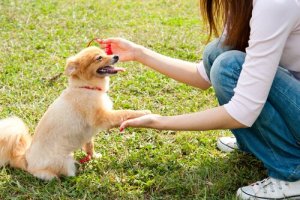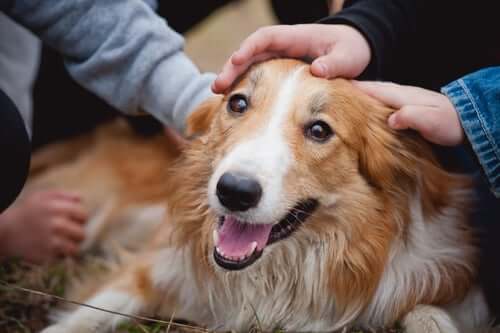How to Greet a Dog For the First Time

When you go to see a friend who’s got a dog, or run into them on the street, or if you’re about to adopt a dog yourself, there are several things you should be aware of. In this article, we’ll teach you how to greet a dog for the first time to avoid any accidents or problems.
Analyze the dog’s personality before greeting him

Approaching a pet or a stray animal is something that happens commonly. However, you should take certain precautions. In the same way that you greet a person, when you greet a dog you should “introduce” yourself to avoid any issues.
Firstly, you should know that all dogs have different personalities (yes, just like humans). In other words, there are some that like people more than others. A lot also depends on how the owner has socialized the dog since it was a puppy.
An animal’s past can also affect how they react to certain movements. For example, if the animal has been hit, they may not like to be touched or caressed. The mood of that animal is also very important at the time of the introduction. As a result, you should pay attention to the dog’s tail, ears, and mouth.
If the dog shows any sign of discomfort, avoid any physical contact. If you don’t heed his body language, he may show dissatisfaction in another way, such as growling, showing his teeth, barking, staring, raising his ears, or getting up.
There are also dogs that won’t give any warning before showing aggression. They might just bite without any warning at all. Because of this, you should be very respectful of all animals and try to make any contact slowly and carefully.
Tips to greet a dog for the first time
It’s a risk to approach or greet a dog incorrectly. It’s essential to consider how you should act in this situation. Pay attention to the following tips:
1. Say hello to the owner first
Imagine that you’re out for a walk and you run into a friend who is out walking his dog. Rather than greeting the dog first, you should say hello to your friend. Why? By interacting with the owner first, the dog will realize that you “come in peace” and that the owner trusts you.
Don’t forget that dogs are tuned into the emotional well-being of their owner by analyzing their body language. If they see you interacting amicably with their owner, they won’t probably won’t mind you interacting with them.
2. Ask the owner for permission
Asking the owner is a matter of respect and manners, especially if you don’t know the owner that well. Before you greet a dog, ask the owner if it’s okay. That way, the owner can tell you, for example, if the dog is friendly, what he likes or doesn’t like, how he reacts to strangers, or if now isn’t a good time for an introduction, etc.
3. Don’t look at the dog directly in the eyes
Humans typically look directly into the eyes of someone they talking to or greeting. However, for dogs, this isn’t typical. They have their own code of body language. Looking at them directly in the eyes is a sign of wanting to be dominant or the “alpha” of the pack. In other words, try not to look them straight in the eyes the first time you meet them. It could trigger an aggressive response.
4. Don’t be afraid

Dogs know when someone is afraid of them. Instead of being beneficial to the interaction, it can actually be counterproductive. Why? Because the animal will become defensive and act as if it’s in front of an aggressor. Don’t approach with trembling hands or showing fear. The dog can “smell” fear and may attack.
5. Avoid approaching from the front and get low
To greet a dog for the first time, it’s a good idea to come from the side to show that you’re not a threat. From the animal’s perspective, approaching from the front can be dangerous.
On the other hand, it’s better that you crouch down to be at their height. However, you don’t want to make sudden movements towards the animal, as it can make it feel scared or threatened.
This text is provided for informational purposes only and does not replace consultation with a professional. If in doubt, consult your specialist.